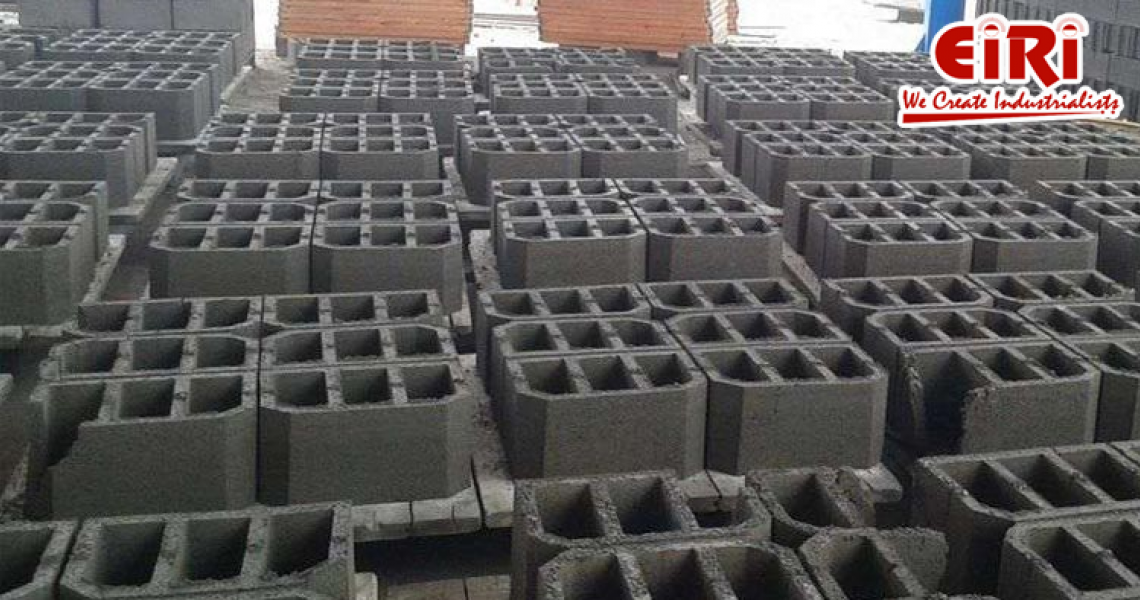Future of Cement Bricks Manufacturing

The concrete brick and block manufacturing in 2020 was valued at $339,597.7 million, and the anticipation is to reach by the year 2030 to $588,151.8 million, thereby arriving at a 5.7% CAGR between 2021 to 2030.
Globally, after China, India is the second-largest brick maker. Indian brick industry is characterized and unorganized by a massive number of small-scale producers that competes at the regional level with each other. The brick industry in India is witnessing over the past years significant development and the growth is due to the ever-increasing construction and infrastructure activities.
Current Scope of Cement Bricks Manufacturing
The market's current scope includes the generation of revenue by precast product sales, such as bricks and blocks for buildings construction and other infrastructure constructions. Precast products are a calculated requirement and the manufacturing is on the production site, exactly fulfilling the sizes and desired shapes. Precast product production is in bulk quantity.
The construction of new projects and redevelopment or the repairing of roads, bridges, infrastructures, and old buildings are the key factors requiring cement bricks and blocks. Besides, the precast products are beneficial as they save construction time and prevent material wastage, making them a cost-effective solution.
Future Forecast of Cement Bricks Manufacturing
The manufacturing and development technology with advanced and new machinery drive the concrete brick and block manufacturing market. It is because precast manufacturing needs an initial setup of high investment to work as a restraint for the growth of the market. Nevertheless, using sustainable building materials affects the concrete brick and block manufacturing market growth. On the other hand, the development plans rise in emerging countries. The anticipation is to act in the forecast period for the manufacturing of the concrete brick and block manufacturing market growth.
The manufacturing market for the concrete block & brick classification is into the region, end-user, application, and type. The segregation is into brick and block. As per the application, the classification is into non-structural and structural types. The end-user division is into the non-residential and residential sectors. It is analyzed by region across Europe ( Germany, France, the UK, Italy, and Europe) North America ( Canada, the U.S., and Mexico), LAMEA ( Latin America, the Middle East, and Africa, and Aisa-Pacific ( India, Bangladesh, China, and the rest of Asia-Pacific).of Asia-Pacific).
Cement concrete bricks are witnessing high demand in the recent few years. The construction sector is widely using cement bricks owing to their unmatched sustainability and low cost. The cement bricks have compressive strength and better durability. Cement bricks also have more resistance to water and fire, they are easy to mold in various shapes as per the construction requirement. Even the hilly areas now extensively use cement bricks as they have the water-repelling feature for a prolonged time.
The Cement Brick Future Prospect in India
The Indian market for cement brick manufacturing is increasing with the reconstruction of existing infrastructure. There is more emphasis on increased residential construction funding, and the eco-friendly building material advent is now the prospect stimulating in the forecast period the market growth.
Urbanization is escalating overseas and across emerging economies that the funding overseas in the construction domain is creating opportunities viable for prominent players in the cement brick production in India. Advanced materials are the need for cement-based bricks and the increase in demand for environmentally suitable building materials is the obstacle in the market of Indian cement bricks. There are other alternatives in the marketplace available to put into use than bricks, and they are the concrete blocks, CLC blocks, Acc blocks, etc, and they are cost-effective.
Wrapping up
With the regulation, increasing the production of clay bricks has escalated the cement brick demand in India. It is a perfect opportunity for people seeking to launch a cost-effective business model that is sustainable and profitable.
Cement brick is the most used material for the construction of the building and there is demand for the building materials and construction. The traditional production of bricks causes severe human health impacts and several environmental issues. It means there is a need to replace the clay bricks with a durable and efficient alternative.
The use and production of alternative materials, such as cement bricks are a great opportunity in the construction sector to ascertain greater sustainability. The ingredients for concrete bricks are easily available. They are easy to produce on-site and involve no heating process, making them economical. They are free from defects and flaws.
Concrete or cement blocks are the recommendation now by builders and contractors as they save space largely. The overall width gets reduced, and there is the advantage that the reliability is not compromised. It increases the space in the construction of the walls that the traditional walls in brick in the big cities are phasing out as an aim to beat the space competition.










